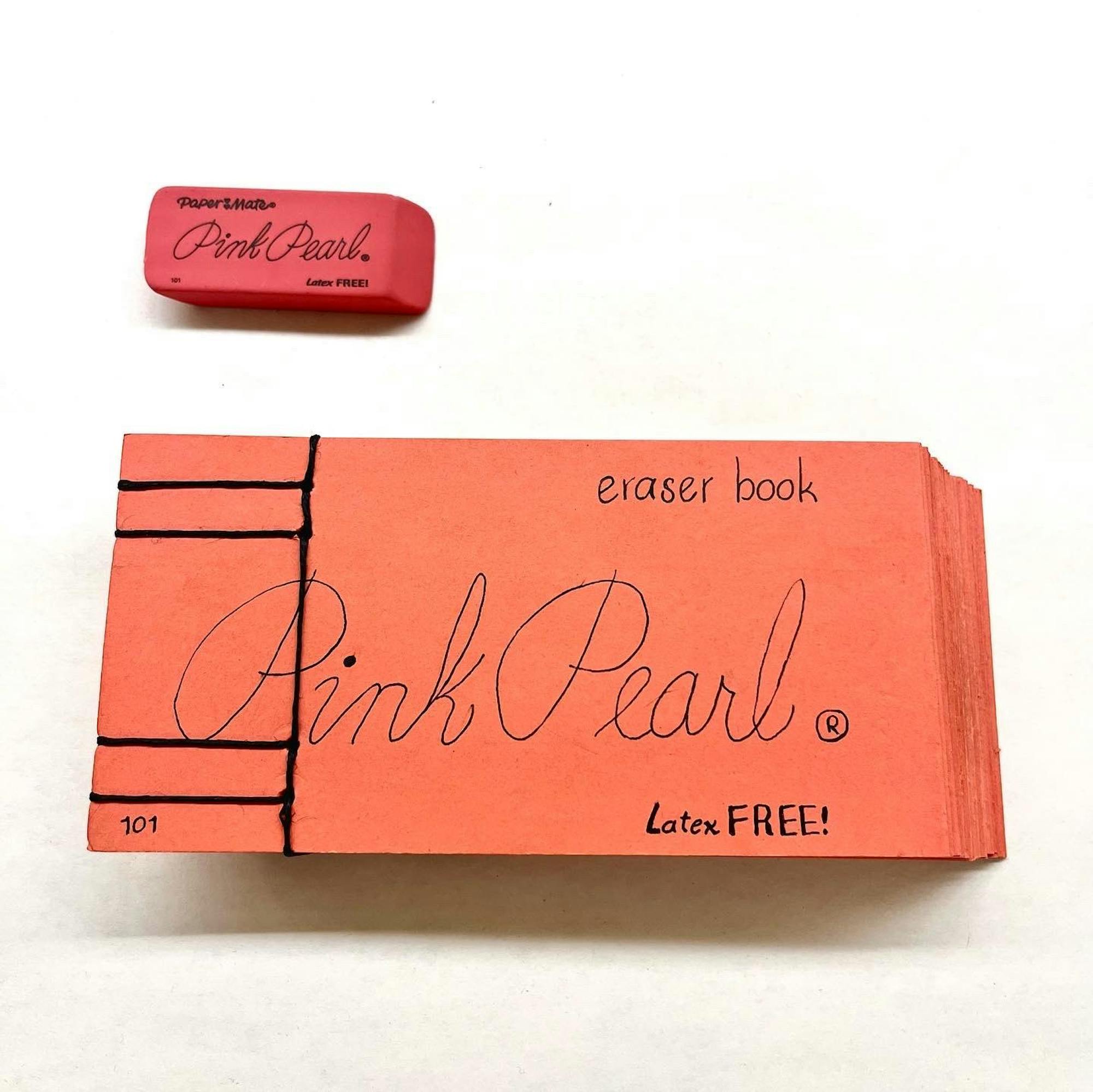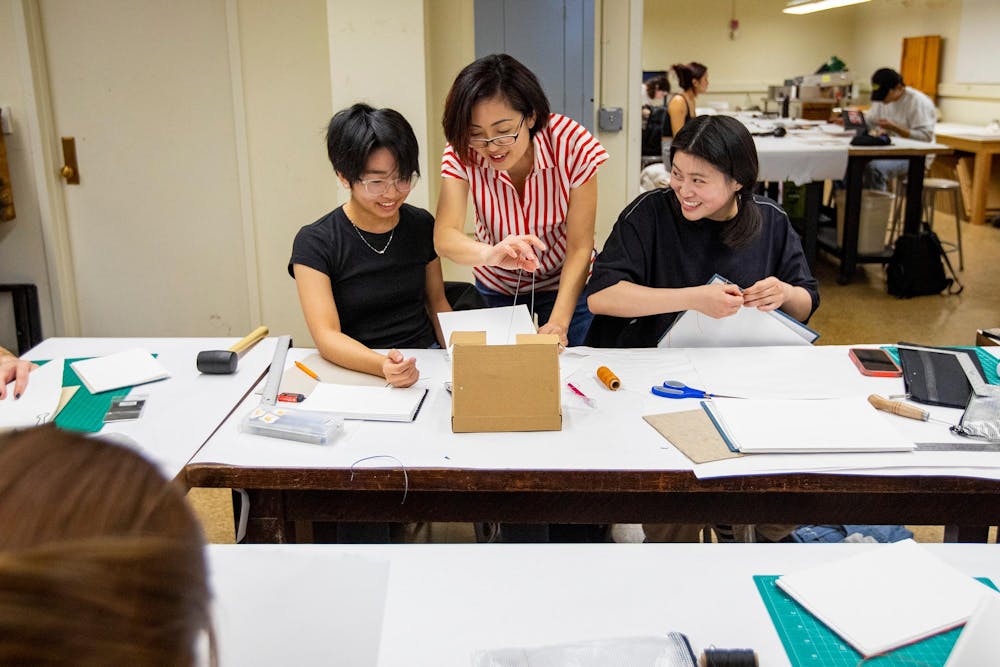Home to many of Brown’s special collections, the John Hay Library offers a haven for thousands of books on campus. But beyond the Hay’s archives and floor-to-ceiling stacks, what else goes on inside? The making of books themselves.
Every Monday and Wednesday afternoon, “VISA 1250: Art of the Book” meets in the Hay’s Walter Feldman Book Arts Studio. According to its syllabus, the class covers the basics of “designing, printing and binding books by hand.” Across several projects throughout the semester, students are invited to explore both traditional and alternative formats of bookmaking, “including graphic design, papermaking, letterpress printing and bookbinding.”
Course instructor Andre Lee Bassuet, adjunct lecturer in visual arts, uses a broad definition of book arts. “It’s not just about books as you conceive it, but more as a sculptural art form,” she said.
Her class makes a range of book forms, from typical codex books to one-sheet letterpress projects, culminating in a final project for which students produce two editions or versions of a book in any concept or medium.
“Art of the Book” is offered as VISA 1250 during the spring semester and VISA 1240 in the fall. Students can enroll in both sections, as each course covers different projects.
Although Bassuet has only been teaching “Art of the Book” since last year, she fell in love with book arts while taking a summer class at Rhode Island School of Design while an undergraduate student at New York University.
“I had just come back from a study abroad in Italy and I wanted to make a memory book, a memento,” she said. “I came and just fell in love with it. In one week we covered so much.”
Bassuet’s class covers different methods of printmaking, such as Lego Letterpress, polymer plates and hand typesetting. She described the class as time-intensive, meeting twice a week for a total of eight hours and requiring students to complete about six projects for the semester. “It takes a lot of discipline and production management skills to meet these projects on time,” she said.
To help students cope with the workload, one of the first projects Bassuett assigned this semester was a collaborative poetry chapbook — “Food for Thought” — which required each student to bring in a poem of their choosing.
“If you borrowed a living poet’s poem, then you had to contact the poet themselves to get permission,” Bassuet said. She explained that getting writers’ permission to reprint their work was part of the learning process.

"Food for Thought" student cover options on collaborative poetry book. From left to right: Emma Hsiao, Camille Leung, Ines Sawiris. Courtesy of Andre Lee Bassuet
Another project students are currently working on is the #areyoubookenoughchallenge, which invites book artists across the globe to post their work on Instagram, following a monthly theme prompt. Students are required to create and post a project for either March’s theme, “Edge,” or April’s theme, “Typography.”
“It’s a learning experience to be able to put your work out there, as well as to see the very different ways of how artists interpret these themes,” Bassuet said.

Emma Hsiao ’25, a student currently enrolled in the course, is currently working on a flipbook with cutouts that allows viewers to see the ocean’s edge for the Instagram challenge.
“For me, it’s about the process,” Hsiao said. “Being able to put the papers down, glue them to the covers, make a cover, glue the covers together. I love working with my hands, and this class is a great way to do that.”
Although Hsiao is taking VISA 1250 to fulfill one of her visual art concentration studio requirements, she recommended the course to students both within and outside of the department. “It’s for people who like to assimilate their interests into something else, because books are a vessel for things, so you can put whatever you want in them,” she said.
Emma Donnelly ’25, another student in the class, also recommended the course, describing it as unique among the VISA department’s upper-level studio classes that mostly focus on printmaking and drawing.
“You get to use a lot of new tools that you haven’t been able to in other classes,” she said, citing the guillotine and printing presses as examples.
Like Hsiao, Donnelly has found space for her other passions in book arts. “I’m interested in math, so I’ve figured out a way to work with text and angles in a way that’s more numerical-oriented,” she explained. When “thinking about (making) adhesives for the books, you have to match the right ratios depending on what materials you’re using.”
“My class this semester is a good mixture of half VISA concentrators, half outside majors,” Bassuett said. For all students, VISA 0100 is a prerequisite to taking the course. “I want to know that they have had experience concepting, have had experience meeting art deadlines, have some experience in some sort of artmaking,” she added.
Although shopping period can be overwhelming, Bassuett said that students who stick with the course are generally able to secure a spot. “They’re all here because they take the class seriously, and they’re all working really hard on their projects. I’m really proud of them.”
“Art of the Book” is being offered again as VISA 1240 in fall 2024. Until then, students will continue to experiment with different ways of engaging and creating books beyond traditional notions of the art form, while proving Bassuet’s point: “Anything can be a book.”

Rya is an Arts & Culture editor from Albany, NY. She is a senior studying English and Literary Arts, and her favorite TV show is Breaking Bad.





